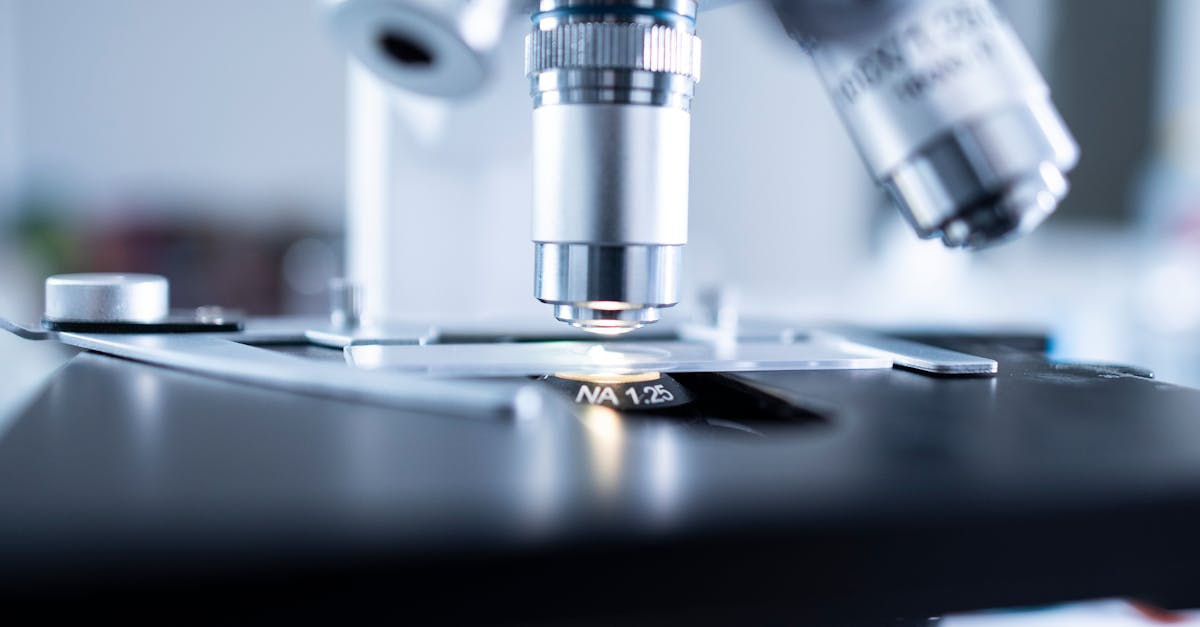Biotechnology is a captivating field at the intersection of biology and technology that has revolutionized various sectors ranging from healthcare and agriculture to industry and environmental science. This intricate science harnesses the power of living organisms, their parts, and their processes to develop innovative solutions for some of humanity’s most pressing challenges. To fully appreciate the impact and potential of biotechnology, it is crucial to understand its foundational concepts. In this article, we will delve into the basics of biotechnology, exploring its key principles, applications, techniques, and the ethical considerations that accompany this transformative field.
Introduction to Biotechnology

At its core, biotechnology leverages the mechanisms of life to achieve specific goals. It delves into the molecular workings of cells, their intricate interactions within organisms, and the complex ecosystems that foster biodiversity. The field employs an array of tools, techniques, and technologies to manipulate and utilize biological systems for desired outcomes. These include genetic engineering, tissue culture, fermentation, and bioinformatics, to name a few. Biotechnology has been around for centuries, with early examples such as fermentation in beer and wine production. However, recent advancements in technology have significantly expanded the scope and potential of biotechnology in various industries.
Basics of Biotechnology
What is Biotechnology?
The term “biotechnology” was first coined by Hungarian engineer Karl Ereky in 1919. He defined it as the “production of goods using living organisms.” Today, biotechnology encompasses a wide range of scientific disciplines, including molecular biology, genetics, biochemistry, microbiology, and chemical engineering. It involves the use of living organisms or their parts to create or modify products, improve processes, or develop new technologies. Biotechnology can be classified into two main categories: traditional and modern.
Traditional biotechnology refers to techniques that have been used for centuries, such as fermentation, breeding, and cross-breeding. These techniques involve the use of living organisms to produce products like food, beverages, and medicine. Modern biotechnology, on the other hand, involves more advanced methods that manipulate genetic material to achieve desired outcomes. DNA sequencing, gene editing, and tissue engineering are some examples of modern biotechnologies.
History of Biotechnology
The history of biotechnology can be traced back to ancient civilizations, where people used fermentation to produce bread, beer, and wine. However, it was not until the 19th century that biotechnology started to take shape as a science. In 1828, German chemist Friedrich Wöhler synthesized urea in the laboratory using inorganic materials, proving that organic compounds could be created from inorganic substances. This discovery laid the foundation for the field of organic chemistry, which is an integral part of biotechnology.
In the late 1800s, Louis Pasteur, a French microbiologist, conducted groundbreaking research on microorganisms and fermentation. His work led to the pasteurization process, which prevents spoilage of milk and other perishable foods. In the early 1900s, Russian biologist Gregor Mendel’s experiments with pea plants laid the foundation for the study of genetics and heredity.
The mid-20th century saw rapid advancements in biotechnology, with the discovery of the structure of DNA by James Watson and Francis Crick in 1953. The invention of recombinant DNA technology in the 1970s marked a significant milestone in biotechnology, enabling scientists to insert foreign DNA into an organism’s genome. This technique paved the way for genetic engineering and the production of genetically modified organisms (GMOs). In the 1980s, the first genetically engineered drug, human insulin, was approved by the U.S. Food and Drug Administration (FDA).
With the development of new technologies and techniques, biotechnology has continued to expand its reach into various industries. Today, biotechnology is an interdisciplinary field that combines biology, chemistry, physics, and engineering to develop innovative solutions for real-world problems.
Types of Biotechnology
Biotechnology can be broadly classified into four main types based on the applications and techniques used:
- Medical biotechnology: This branch of biotechnology focuses on developing treatments and cures for diseases. It includes the production of pharmaceuticals, vaccines, and diagnostic tests using living organisms or their parts.
- Agricultural biotechnology: Agricultural biotechnology involves the use of living organisms, such as plants, animals, and microorganisms, to improve crop yield, quality, and efficiency. It also encompasses genetic modification of crops to make them resistant to pests, diseases, and harsh environmental conditions.
- Industrial biotechnology: This type of biotechnology utilizes living cells or enzymes to produce chemicals, fuels, and other products. It is often referred to as “white biotechnology” due to its potential to replace traditional chemical processes, which can be harmful to the environment.
- Environmental biotechnology: Environmental biotechnology uses biological systems to address environmental issues, such as pollution, waste management, and conservation. It involves the development of sustainable solutions that minimize the impact of human activities on the environment.
Applications of Biotechnology
The applications of biotechnology are vast and have had a profound impact on various industries. Let’s take a closer look at some of the key areas where biotechnology is being used today.
Healthcare
Biotechnology has played a significant role in the advancement of modern medicine. From the discovery of antibiotics to the development of gene therapies, biotechnology has enabled scientists to understand and treat diseases more effectively. One of the most significant contributions of biotechnology to healthcare is the production of insulin, which has improved the lives of millions of people with diabetes. Other biotechnology-derived drugs include human growth hormone, erythropoietin, and monoclonal antibodies.
The emergence of personalized medicine is another significant development in the healthcare sector made possible by biotechnology. By analyzing an individual’s genetic makeup, doctors can now tailor treatments to match a patient’s unique genetic profile, reducing the risk of adverse reactions and improving treatment outcomes.
Agriculture
Biotechnology has transformed the agriculture industry through the development of genetically modified (GM) crops. GM crops have been genetically engineered to increase their yield, improve their resistance to pests and diseases, and enhance their nutritional value. These crops have not only helped farmers increase their productivity but also contribute to food security by ensuring a stable supply of crops.
In addition to GM crops, biotechnology has also led to the development of new methods for plant breeding, such as marker-assisted selection (MAS) and genome editing. These techniques allow scientists to identify desirable traits in plants without introducing foreign DNA, making the process more precise and efficient.
Industry
Industrial biotechnology has the potential to significantly reduce our dependence on fossil fuels and decrease industrial pollution. Biobased products, such as biofuels, bioplastics, and biodegradable materials, are becoming increasingly popular as sustainable alternatives to traditional products derived from petrochemicals.
Enzymes produced through biotechnology are also used in various industrial processes, such as detergent production, papermaking, and textile manufacturing. These enzymes are highly specific and often work at lower temperatures and pressures, making them more energy-efficient and environmentally friendly than traditional chemical catalysts.
Environmental Conservation
Biotechnology is playing a crucial role in conserving the environment and promoting sustainability. Bioremediation, the use of microorganisms to degrade or remove pollutants from contaminated environments, is one example of how biotechnology is being used to clean up oil spills, hazardous waste sites, and other polluted areas. Biodegradable plastics and packaging materials, which are produced using biotechnology, are also helping to reduce plastic waste and its harmful impact on the environment.
Techniques in Biotechnology
Biotechnology employs an array of techniques to manipulate living organisms for desired outcomes. Let’s take a closer look at some of the key techniques used in biotechnology.
Genetic Engineering
Genetic engineering is the process of modifying an organism’s genetic makeup by introducing foreign DNA into its genome. This technique has played a significant role in the development of genetically modified crops, drugs, and other products. The first genetically modified organism (GMO) was created in 1973 when scientists inserted a gene from one species of bacteria into another.
Since then, genetic engineering has become more advanced, with the development of techniques such as CRISPR-Cas9, which allows scientists to edit specific genes with unprecedented precision. This technique has revolutionized the field of genetics and has the potential to cure genetic diseases and eradicate certain types of cancer.
Tissue Culture
Tissue culture is the process of growing cells or tissues outside of their natural environment, usually in a controlled laboratory setting. This technique is commonly used in the production of plant clones for agriculture and horticulture. In medicine, tissue culture has been instrumental in developing vaccines and producing human tissues and organs for transplants.
Fermentation
Fermentation is a metabolic process that converts sugars into alcohol or organic acids using microorganisms, such as yeast or bacteria. This technique has been used for centuries in food and beverage production, with early examples being the fermentation of grapes to produce wine and grains to make beer. Today, fermentation is also used in the production of pharmaceuticals, industrial chemicals, and biofuels.
Bioinformatics
Bioinformatics is the use of computer science, statistics, and mathematics to analyze and interpret biological data. With the advancement of technology, vast amounts of biological data are now being generated, making bioinformatics an essential tool for analyzing and understanding this data. This technique has played a crucial role in fields such as genetics, drug discovery, and disease diagnosis.
Importance of Biotechnology
Biotechnology has become an integral part of our lives, and its importance cannot be overstated. Here are some of the key reasons why biotechnology is essential:
- Improving Human Health: Biotechnology has enabled the development of drugs, therapies, and medical procedures that have significantly improved human health and saved countless lives.
- Enhancing Food Production: With the world’s population expected to reach 9.7 billion by 2050, biotechnology is essential for producing more food with fewer resources. GM crops, precision agriculture, and other biotechnologies are helping to increase crop yield, reduce food waste, and promote sustainable farming practices.
- Promoting Sustainability: Biotechnology offers sustainable solutions to some of humanity’s most pressing challenges, such as climate change, pollution, and resource depletion. By developing environmentally friendly products and processes, biotechnology is contributing to a cleaner and healthier planet.
- Boosting Economic Growth: The biotechnology industry has created millions of jobs worldwide and continues to drive economic growth through innovation and technological advancements.
Future of Biotechnology

The future of biotechnology looks incredibly promising, with scientists exploring new frontiers and developing innovative solutions to address global challenges. Some of the key areas where biotechnology will continue to play a crucial role include:
- Synthetic Biology: This emerging field combines engineering principles with biology to design and construct new biological systems or modify existing ones for specific purposes. Synthetic biology has the potential to create entirely new industries, such as biofuels and biomaterials.
- Nanobiotechnology: This field involves manipulating materials at the nanoscale level for use in various biomedical applications. For example, nanobiotechnology could be used to deliver drugs to specific cells or tissues in the body, increasing their effectiveness while minimizing side effects.
- Gene Editing: The emergence of CRISPR-Cas9 and other gene editing techniques has opened up new possibilities for treating genetic diseases, improving crop yield, and curing viral infections.
- Bioinformatics: With the amount of biological data expected to grow exponentially in the coming years, bioinformatics will continue to play a crucial role in analyzing and interpreting this data.
Conclusion
Biotechnology is a rapidly evolving field that holds immense potential for improving our lives and addressing some of the world’s most pressing challenges. By harnessing the power of living organisms, their parts, and their processes, biotechnology has transformed healthcare, agriculture, industry, and environmental conservation. As we continue to unlock the mysteries of life, biotechnology will undoubtedly play an even more significant role in shaping our future.

